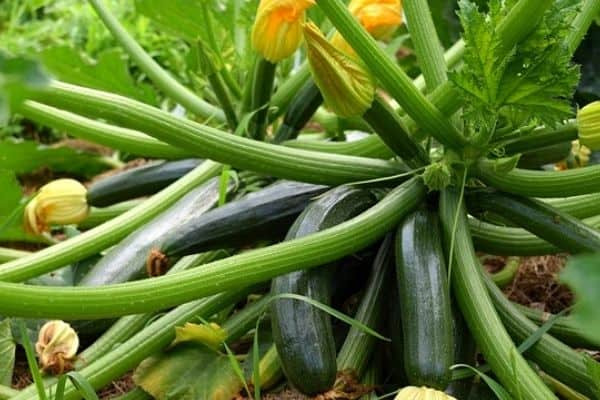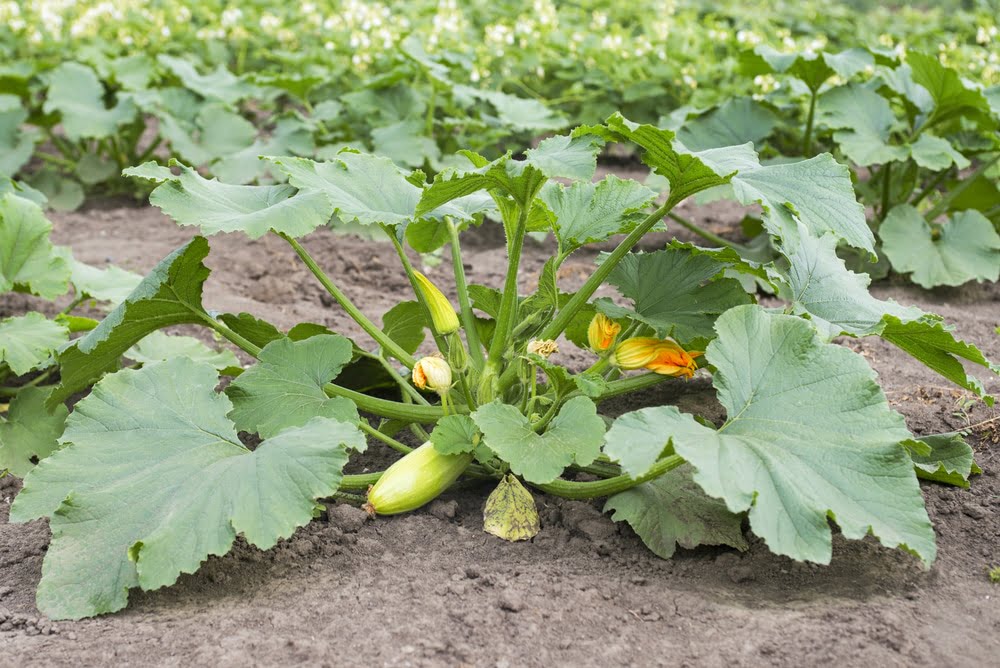If you’ve ever considered growing zucchini in your garden but aren’t quite sure how much space these vibrant green plants require, look no further. In this article, we’ll provide you with essential information on the space requirements for growing zucchini. By the end, you’ll have a clear understanding of just how much room these delicious and versatile vegetables need to flourish in your garden, ensuring a bountiful zucchini harvest for your culinary delights. So, let’s jump in and explore the world of zucchini gardening!

Choosing the Right Site
Climate
When selecting a site to grow zucchini, it’s crucial to consider the climate. Zucchini plants thrive in warm weather, with daytime temperatures between 70°F and 85°F (21°C and 29°C) being ideal. Ensure that the location has a long enough growing season without severe frost, as zucchini plants are highly susceptible to cold temperatures. In addition, make sure the area receives ample sunlight for at least 6-8 hours a day to promote optimal growth.
Sunlight
As mentioned before, zucchini plants require a significant amount of sunlight to thrive. When choosing your site, ensure that it receives ample sunlight throughout the day. Find an area in your garden that is not shaded by trees or other tall structures, as this can prevent your zucchini plants from getting the necessary sunlight. Healthy exposure to sunlight will promote robust growth, enhance fruit production, and minimize the risk of diseases.
Soil Type
Consider the soil type when selecting a site for growing zucchini. These plants prefer well-drained soil with a slightly acidic to neutral pH level between 6.0 and 7.0. Sandy loam or loamy soil with good fertility is ideal for zucchini cultivation. Avoid heavy clay soils that tend to retain excessive moisture, as this can lead to root rot and other issues. If your soil is not suitable, you can improve it by incorporating organic matter such as compost or aged manure.
Drainage
Good soil drainage is vital for successful zucchini cultivation. Standing water around the roots can cause root rot and other diseases, so it is important to choose a site with proper drainage. Raised beds or mounds can be created to improve drainage, especially if your garden has heavy clay soil. If your site tends to get waterlogged, consider installing drainage systems or diverting excess water away from the planting area.
Container vs. In-Ground Growing
Container Growing
If you have limited space or want more control over your zucchini plants, consider container gardening. Growing zucchini in containers allows you to move them around to find the best sunlight exposure. Choose a container that is at least 18-24 inches (45-60 cm) deep and wide to accommodate the extensive root system of zucchini. Make sure the container has drainage holes to prevent waterlogging. Use a high-quality potting mix and regularly water and fertilize your container zucchini plants as needed.
In-Ground Growing
If you have sufficient space and favorable soil conditions, in-ground growing is a suitable option for cultivating zucchini. Prepare the garden bed by loosening the soil to a depth of 12-15 inches (30-38 cm) and removing any weeds or debris. Create mounds or raised beds if necessary to improve drainage. Ensure proper spacing between plants as directed by the variety you are growing.
Spacing Considerations
Planting Distance
When planting zucchini, it is essential to provide adequate spacing between individual plants. Each zucchini plant requires around 2-3 feet (60-90 cm) of horizontal space to allow for healthy growth and airflow. This spacing prevents overcrowding, which can lead to a higher risk of diseases and hinder the overall development of the plants.
Row Spacing
Consider row spacing when planning your zucchini garden. Allow at least 3-4 feet (90-120 cm) of space between rows to provide ample room for plant growth and ease of maintenance. Sufficient row spacing ensures that the zucchini plants do not compete with each other for nutrients, water, and sunlight, resulting in healthier and more productive plants.
Vertical Trellis
To maximize space and improve airflow, you can consider training your zucchini plants to grow vertically using a trellis. This technique is especially beneficial if you have limited garden space or want to avoid sprawl. Install a sturdy trellis or vertical support system and guide the zucchini vines upward as they grow. Vertical growing not only saves space but also facilitates easy access for pruning, harvesting, and pest management.
Garden Bed Preparation
Soil Preparation
Before planting zucchini, it is important to prepare the garden bed properly. Start by removing any weeds, rocks, or debris from the area. Loosen the soil to a depth of 12-15 inches (30-38 cm) using a garden fork or tiller. Break up any clumps and ensure a uniform texture throughout the bed. This process promotes healthy root growth and improves moisture retention and nutrient uptake.
Adding Organic Matter
Enrich your garden soil by adding organic matter, such as compost or aged manure. Organic matter enhances soil fertility, improves drainage, and aids in moisture retention. Spread a layer of organic matter across the bed and work it into the soil using a garden fork or tiller. Aim for a depth of 2-4 inches (5-10 cm) of organic matter incorporated evenly throughout the bed.
Fertilization
Providing adequate nutrients to your zucchini plants is essential for their growth and productivity. Before planting, apply a balanced organic fertilizer or a slow-release granular fertilizer according to the manufacturer’s instructions. Alternatively, you can top dress with compost or a well-balanced organic fertilizer during the growing season. Regularly monitor your plants for any nutrient deficiencies or signs of stress and adjust fertilizer applications if needed.
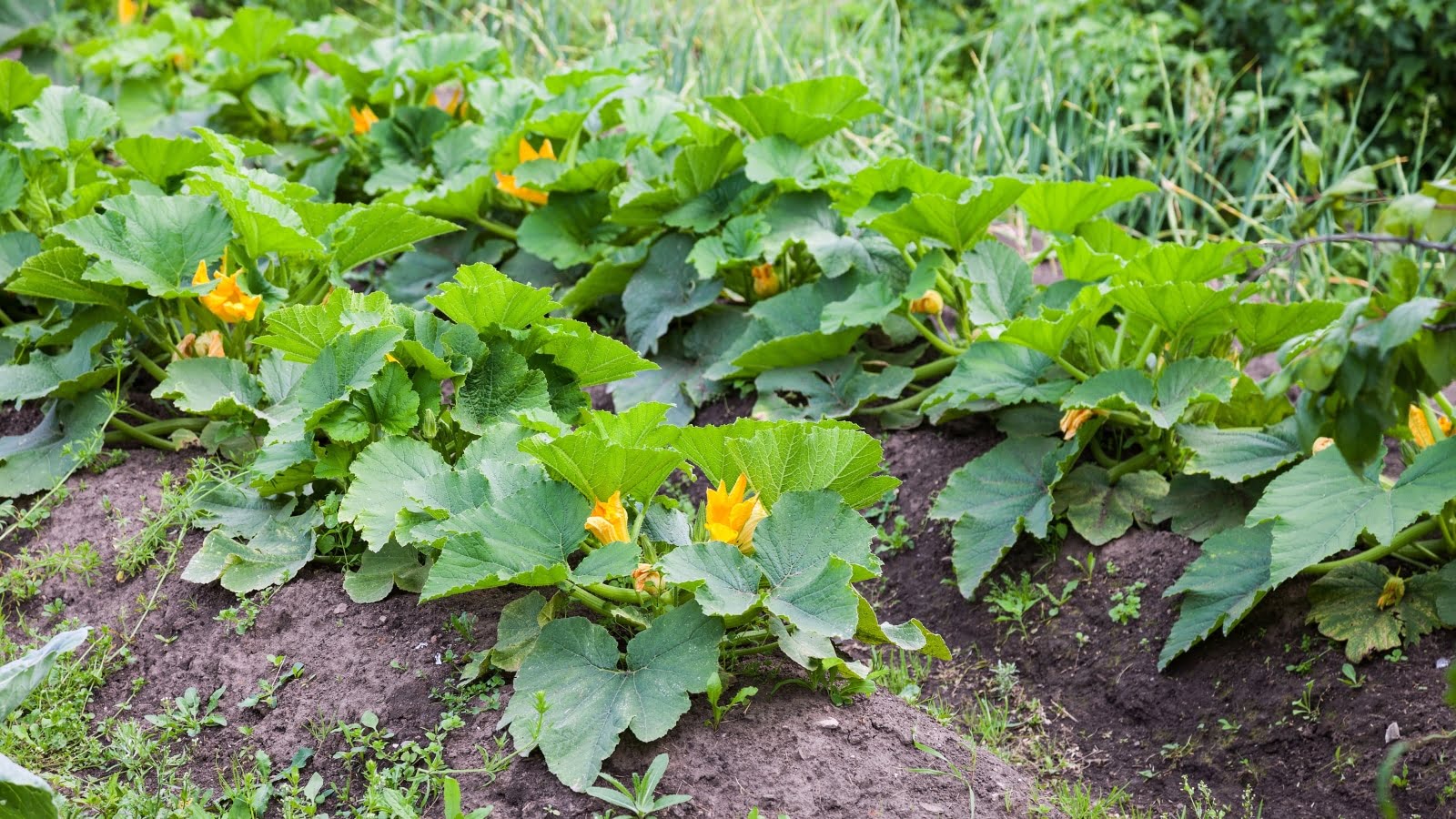
Planting Techniques
Direct Sowing
Direct sowing is a popular method of planting zucchini seeds directly in the garden bed. Once the soil temperature has reached a consistent 60°F (15°C) or above, sow the seeds 1-2 inches (2.5-5 cm) deep and 2-3 feet (60-90 cm) apart. Ensure that each seed has enough space to germinate and develop into a healthy plant. Thinning may be necessary to maintain the recommended spacing between individual zucchini plants.
Starting from Seedlings
Another planting technique is starting zucchini seeds indoors and transplanting the seedlings to the garden. Sow the seeds in biodegradable pots or seedling trays about 4-6 weeks before the expected last frost date in your area. Keep the soil consistently moist and provide adequate sunlight or grow lights. Once the weather and soil conditions are suitable, transplant the seedlings to the garden, ensuring the recommended spacing between plants.
Transplanting
Whether starting from seeds or purchasing seedlings, it is important to transplant zucchini with care. Handle the seedlings gently, being cautious not to damage the delicate roots. Dig a hole in the prepared garden bed, ensuring it is deep enough to accommodate the roots. Place the seedling in the hole, backfill with soil, and lightly firm the soil around the base of the plant. Water thoroughly after transplanting to ensure good root-to-soil contact.
Watering and Irrigation
Water Needs
Watering is a critical aspect of zucchini cultivation, and maintaining proper moisture levels is essential for healthy plant growth. Zucchini plants require consistent soil moisture, but be cautious not to overwater, which can lead to root rot. Water deeply and evenly, ensuring that the top 1-2 inches (2.5-5 cm) of soil remains consistently moist. Monitor soil moisture levels regularly and adjust watering as needed, considering factors such as temperature, rainfall, and soil type.
Irrigation Methods
Choose an appropriate irrigation method for watering your zucchini plants. While hand watering with a watering can or hose is practical for smaller gardens, consider using a drip irrigation system or soaker hose for larger plantings. These methods ensure efficient water distribution and minimize evaporation. Irrigate in the morning to allow the foliage to dry before evening to reduce the risk of diseases caused by excess moisture.
Mulching
Mulching around zucchini plants offers numerous benefits. Apply a layer of organic mulch, such as straw, wood chips, or dried leaves, around the base of the plants. Mulching helps retain soil moisture, suppresses weed growth, regulates soil temperature, and prevents soil erosion. Additionally, mulch acts as a barrier between the soil and zucchini fruits, reducing the likelihood of fruit rot and maintaining cleanliness during harvest.
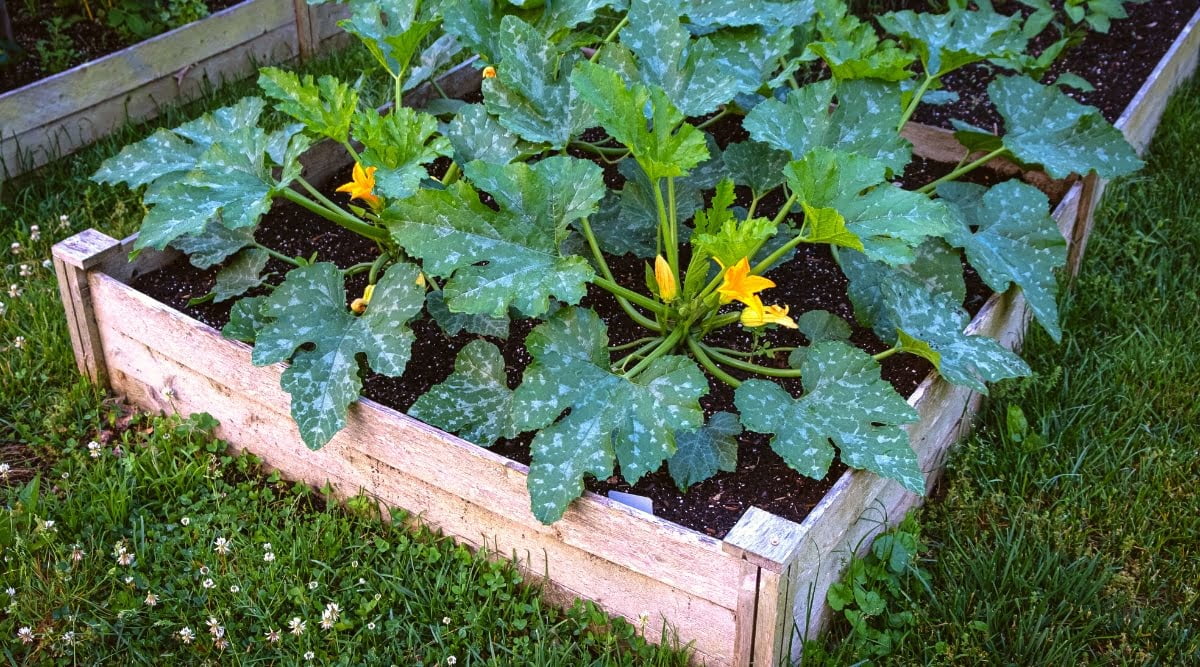
Temperature and Humidity Requirements
Optimal Temperature Range
Zucchini plants thrive in warm weather conditions. The optimal temperature range for their growth and fruit production is between 70°F and 85°F (21°C and 29°C). Cooler temperatures can slow down growth, while excessively hot temperatures can hinder pollination and fruit setting. Monitor the weather and provide adequate protection through shade cloth or row covers if extreme heat or cold is expected.
Cooling Measures
To mitigate the effects of extreme heat and maintain optimal growing conditions, employ cooling measures in your zucchini garden. Consider placing shade cloth over your plants during peak heat hours to reduce direct sunlight. Providing adequate mulch helps regulate soil temperature and retains soil moisture, both of which contribute to cooling the root zone. Regularly inspect your plants for signs of stress and adjust watering and other practices accordingly.
Humidity Control
Zucchini plants prefer moderate humidity levels for healthy growth. Excessively high humidity can promote fungal diseases, while extremely low humidity can cause leaf wilting and reduced fruit production. To control humidity levels, ensure proper spacing and airflow between plants to prevent moisture buildup. Adequate pruning and thinning can also improve air circulation and reduce humidity-related issues.
Pest and Disease Management
Common Pests
Several common pests can pose a threat to zucchini plants, such as aphids, squash bugs, cucumber beetles, and vine borers. These pests can damage foliage, transmit diseases, or even kill the plants if left untreated. Regularly inspect your plants for signs of pest infestation, such as yellowing leaves, chewed foliage, or stunted growth. Early detection allows for timely intervention and prevents pest populations from multiplying.
Prevention Techniques
Implement preventive techniques to minimize the risk of pest infestation. Providing proper plant spacing and airflow reduces the likelihood of pests and diseases. Remove and destroy any infested or diseased plant material to prevent the spread of pests. Practice good garden hygiene by regularly cleaning up debris and fallen leaves. Additionally, avoid over-fertilization, as lush growth can attract pests.
Organic Pest Control
Consider using organic pest control methods to manage pests effectively while minimizing harm to beneficial insects and the environment. Encourage beneficial insects, such as ladybugs and lacewings, which naturally prey on garden pests. Use organic insecticides like neem oil or insecticidal soaps when necessary, following the instructions carefully. Crop rotation and companion planting can also disrupt pest life cycles and deter insect pests.
Disease Prevention
To prevent diseases in your zucchini plants, start with disease-resistant varieties when possible. Proper spacing, adequate airflow, and good sanitation practices are essential. Avoid overhead watering, as wet foliage can promote fungal diseases. Regularly inspect your plants for signs of diseases like powdery mildew or blossom end rot. Promptly remove and dispose of any infected plant material to prevent spreading.
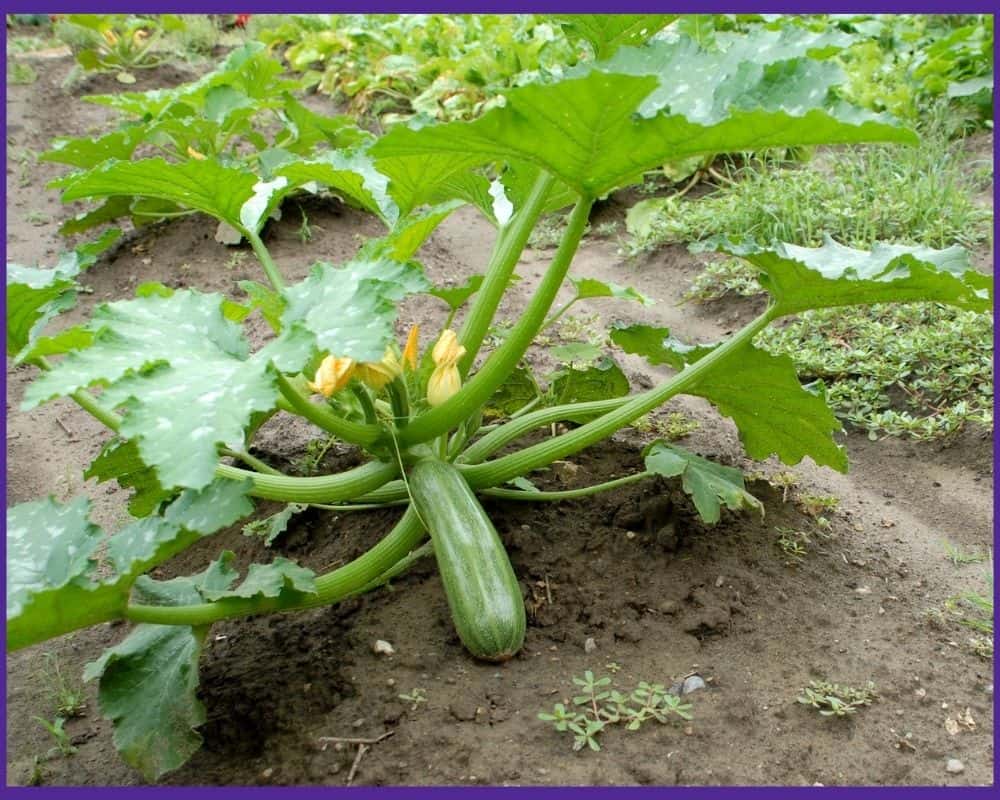
Harvesting and Pruning
Determinate vs. Indeterminate Varieties
Zucchini varieties can be classified as determinate or indeterminate. Determinate varieties tend to have a compact growth habit and produce a single large harvest before slowing down or ceasing production. Indeterminate varieties continue to produce fruits throughout the growing season, providing a longer harvest period. Understanding the variety cultivated helps determine the appropriate pruning and harvesting techniques.
Pruning Techniques
While zucchini plants generally do not require extensive pruning, light pruning can help improve air circulation and sunlight penetration. Remove any damaged, diseased, or dead foliage as it appears. You can also selectively prune the main vine to control the plant’s size and encourage lateral branching, which may increase fruit production. Avoid heavy pruning as it can limit the plant’s energy reserves and fruit production.
Harvesting Time
Knowing when to harvest zucchini ensures that you enjoy the best flavor and texture. Begin harvesting zucchini when the fruits are around 6-8 inches (15-20 cm) long, depending on the variety. Use a sharp knife or pruning shears to gently cut the fruit from the stem, leaving a short stem attached. Regular harvesting promotes continuous fruit production and prevents the fruits from becoming overly mature and seedy.
Crop Rotation and Succession Planting
Crop Rotation Benefits
Implementing crop rotation practices is beneficial for zucchini cultivation. Rotating zucchini with other plant families helps break disease and pest cycles, reduce soil nutrient depletion, and improve overall soil health. Avoid planting zucchini or other cucurbits in the same location year after year. Instead, rotate zucchini crops with unrelated plants like tomatoes, beans, or leafy greens.
Succession Planting Guidelines
Succession planting involves planting zucchini in multiple stages or intervals, ensuring a continuous supply of fresh produce throughout the season. Start by planting the first batch of zucchini at the recommended time for your region. Then, every few weeks, sow additional seeds or transplant seedlings to maintain a staggered harvest. This not only maximizes productivity but also helps manage potential disease and pest issues by minimizing a large concentration of plants at once.
By following these guidelines, you can create the ideal conditions for growing healthy, productive zucchini plants. With proper site selection, careful consideration of spacing and planting techniques, and diligent maintenance practices, you’ll be well on your way to enjoying a bountiful zucchini harvest in your garden. Happy gardening!
